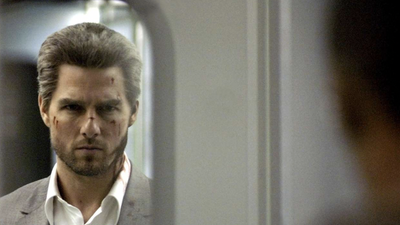Did Michael Mann's "Collateral" signal a step backwards for film? Some initially worried that the film's visual aesthetic, a departure from the director's usual, polished cinematic style, would be a detriment. However, the film, celebrating its 20th anniversary this week and newly released on 4K Blu-ray, offers a richer experience than initially perceived.
"Collateral" eschewed the slick, film-like look of Mann's previous works, instead opting for a rough, almost grainy aesthetic that mimicked the footage captured on the fly by an unseen observer. This rawness resonated with the late '90s and early aughts trend of films shot on standard-definition video cameras and then transferred to 35mm film, a process known as "film out." This hybrid texture, evident in films like "The Celebration," "Dogville," and "28 Days Later," gave "Collateral" a distinct, gritty quality.
Interior scenes were shot on 35mm film, yet the filmmakers chose film stock that, after processing, matched the video used for exterior sequences. This deliberate decision made the video aesthetic dominant, lending the film a unique, almost documentary-like feel.
What's truly remarkable is that visual elements typically avoided in big-budget Hollywood productions â like the grainy texture of night footage or the telltale signs of video technology â are not only present in "Collateral," but embraced. This deliberate choice showcased the film's confidence in its digital skin, a bold move considering the film's $65 million budget. Even George Lucas, a pioneer in digital filmmaking, attempted to mask the digital look in "Attack of the Clones," his second "Star Wars" prequel, striving to emulate the traditional 35mm aesthetic.
Perhaps the most striking aspect of "Collateral's" visual approach is its ability to capture the nocturnal vibrancy of Los Angeles. The film's digital format allows viewers to witness the city's lights reflected in low-lying clouds, a detail almost impossible to achieve with traditional film.
This distinct look was a deliberate choice by Michael Mann, according to an article in American Cinematographer. Co-director of photography Paul Cameron, working alongside Dion Beebe, revealed that Mann "wanted to use the format to create a kind of glowing urban environment; the goal was to make the L.A. night as much of a character in the story as Vincent and Max were."
"Collateral" serves as a testament to Michael Mann's bold vision and his willingness to embrace new technology. By embracing the gritty, digital aesthetic, Mann not only created a visually captivating film, but also pioneered a new cinematic language, paving the way for future filmmakers to explore the artistic potential of digital filmmaking.
Article
Entertainment

Collateral's Gritty Glow: How Michael Mann Embraced Digital for a Cinematic Revolution

